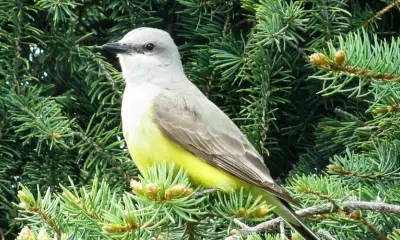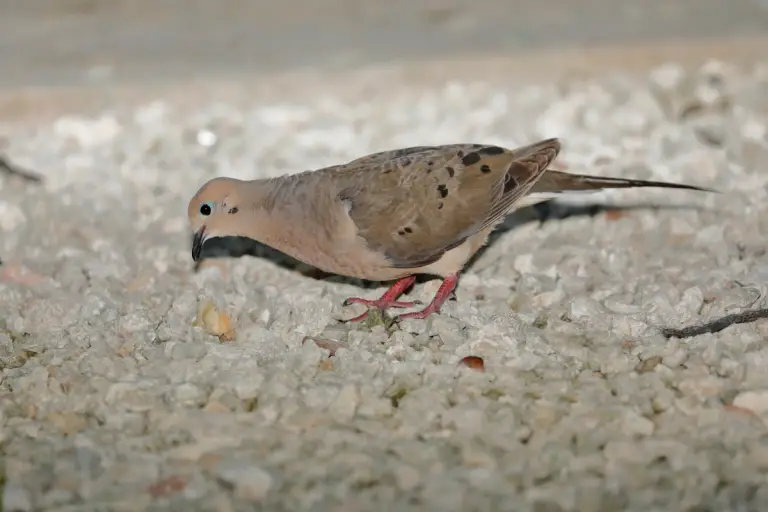5 Types Of DOVES In Georgia (ID Guide With Photos)
Did you recently come across a dove in the state of Georgia, and want to know what species it was?
Identifying doves in the Peach State is not as easy as it might seem, since there are many dove species in Georgia (as well as closely related pigeon species).
To help you identify the bird you saw, we’ll cover the most common doves of Georgia in this article.
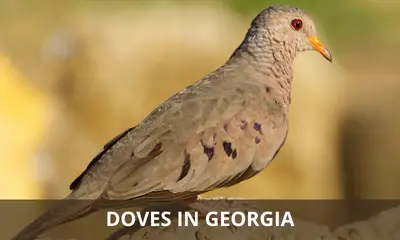
What are the types of doves in Georgia?
The 5 types of doves found in Georgia are:
- Mourning Dove
- Common Ground Dove
- Eurasian Collared-Dove
- White-winged Dove
- Rock Pigeon
While several of these doves are year round residents of Georgia, others are summer visitors during the breeding season.
And one of them is a scarce vagrant that is very rarely seen in the state (more on that below).
Now let’s dive into the details, and take a closer look at each of these doves:
Mourning Dove
Scientific name: Zenaida macroura
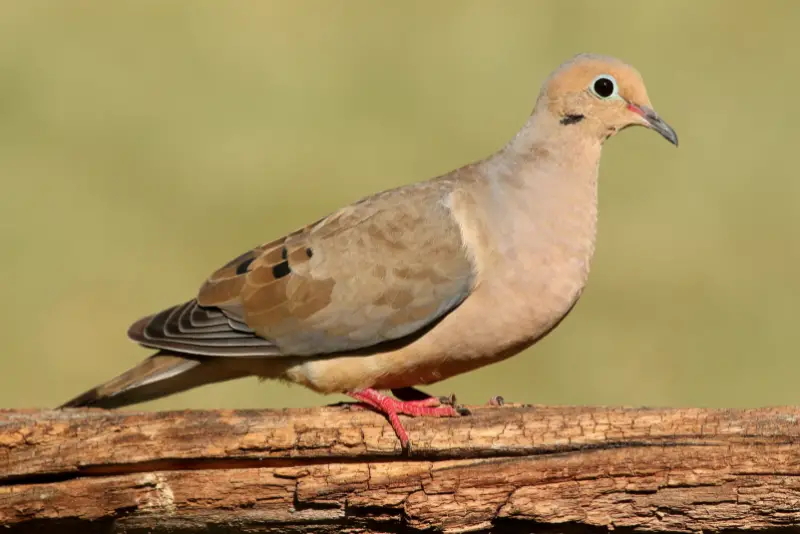
The Mourning Dove is one of the most common birds in North America, especially around farms and suburban areas.
This bird is almost entirely grayish-brown with a pale underside. The wings and the tail are pointed, and there is a small black dot on the side of the face.
When viewed up close, a grayish blue eyering as well as pink legs and toes are great distinguishing features of the Mourning Dove.
This is the most common dove found in Georgia
It is a common breeding bird in Georgia, and can be seen in the state year-round. During the breeding season it is most common in cities, while during winter it also frequents open woodland (but avoids large forests).
These doves are often seen perched on telephone wires, or walking around on the ground while foraging for seeds.
You can readily attract these doves to your yard by scattering millet, safflower seeds, Nyjer seeds, and cracked corn on the ground.
But if you do, make sure there are no bushes or shrubs too close to the feeding area, as cats like to use cover to stalk and pounce on these doves while they are feeding on the ground.
Common Ground Dove
Scientific name: Columbina passerina
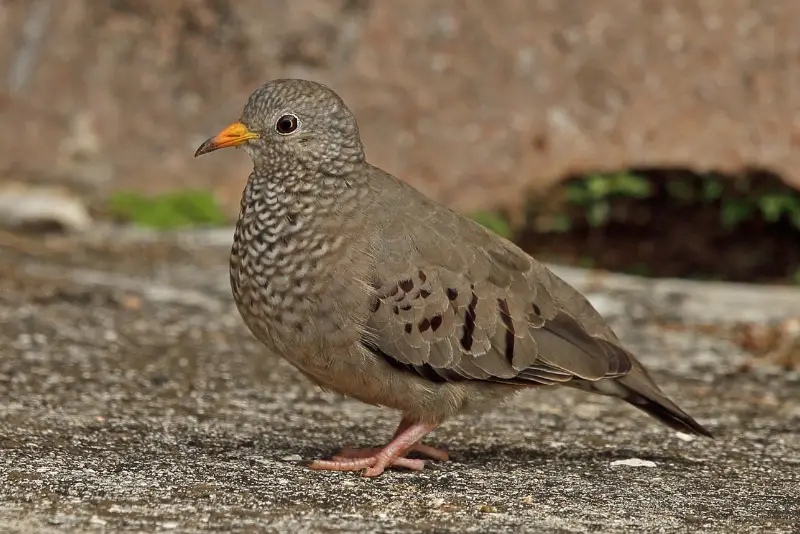
The Common Ground Dove is a small Georgia bird that’s about the size of a sparrow.
It is a species of southern US states, and can be found from Georgia in the east to California in the west.
The overall coloration of these doves is brownish gray, with chestnut tones on the wings. In combination with their small size, the subdued dusty color makes these birds hard to spot on the ground.
Often you won’t notice these doves until you flush them from the ground, and see them flying away.
Another great way to identify them is by their repetitive coo-ing call, which is audible even if you can’t catch a glimpse of the bird since it’s hidden in thick scrub.
Common Ground Doves are quite common breeding birds in Georgia and year-round residents in the state. They readily visit ground bird feeders that offer shelled sunflower seeds and other seeds.
In their original desert habitat, these birds are opportunistic breeders that raise their young after plentiful rainfall leads to an abundance of seeds.
They nest on the ground, which makes them vulnerable to predators. This explains why these doves are so well camouflaged, which allows them to blend in with their surroundings.
White-winged Dove
Scientific name: Zenaida asiatica
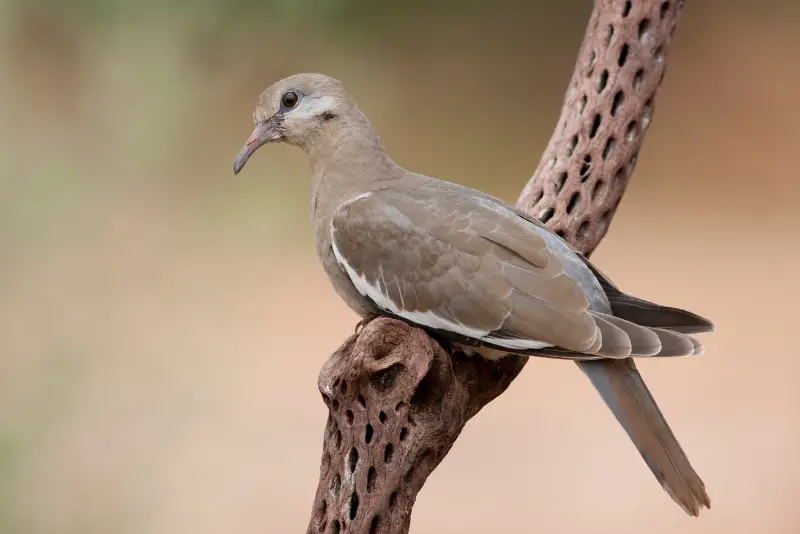
The White-winged Dove used to be a bird of remote desert areas.
But as a result of adapting to man-made habitats, it is now a common breeding bird in cities and towns across the southern US, and shows up in Georgia as a regular visitor outside of the breeding season.
The White-winged Dove is almost entirely light gray, except for a bright white stripe on its wings.
The white areas on the wings are most prominent when it takes to the air, and are a great feature for identifying this species.
It also has a black spot on its cheek, and if viewed close enough, its bright orange eye with a light blue eyering is a great distinguishing feature.
These birds are frequently found in urban areas with suitable nesting trees, and are most often encountered foraging on the ground.
Outside of the breeding season, this dove can be found in southeastern Georgia. Wintering birds found in these areas are migrants from breeding grounds in other states north of Georgia.
Eurasian Collared-Dove
Scientific name: Streptopelia decaocto

The Eurasian Collared-Dove was originally not a native bird of North America.
But after it was accidentally introduced into the Bahamas in the 1970s, the Eurasian Collared-Dove colonized Florida in the 1980s, and then continued its spread throughout most of North America.
The Eurasian Collared-Dove is often found in the same areas as Mourning Doves.
You can tell this bird apart from Mourning Doves by its black collar on the neck, as well as the white patches on the tail, which are most prominent when it is flushed from the ground.
The Eurasian Collared-Dove is an invasive species in Georgia that is becoming increasingly common
Sightings of the Eurasian Collared-Dove in Georgia were first reported in the 1980s, and this invasive dove is now a regular breeding bird in Georgia. It is most common in urban centers such as Atlanta and Savannah.
Since the 1990s this dove has since been encountered as a regular breeding bird in urban habitats of Georgia, and is also reported as a visitor outside of the breeding season.
While these doves aren’t migratory, they are highly dispersive after the breeding season, and as a result show up in areas where they normally don’t breed.
You can readily attract these birds to your backyard by offering bird seeds on the ground.
Rock Pigeon
Scientific name: Columba livia
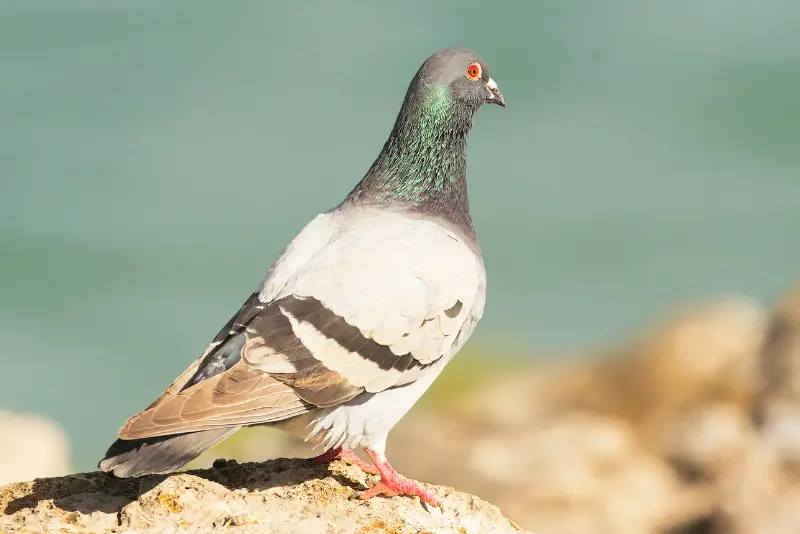
The Rock Pigeon is the most common dove species in the world, as it has adapted extremely well to urban environments, and is found in large numbers in cities all around the globe.
These pigeons are a common sight on many public squares and on the sidewalks of city streets, where they feed on scraps of food that are discarded by humans.
This is another pigeon that isn’t an original native of North America, but was introduced by European settlers in the early 17th Century.
The Rock Dove is considered a pest in many Georgia cities
These pigeons are easily attracted to bird feeders on the ground that offer grains or dried bread. But in many cities Rock Doves are considered a pest, and you may not be allowed to feed them.
The increase of Peregrine Falcons breeding in large cities across North America is largely due to the fact that feral Rock Pigeons provide such a rich food source for these raptors in Georgia.
Rock Doves are also famous for their homing abilities, and were used by humans in previous centuries for carrying messages.
Conclusion
And there we have the doves found in the state of Georgia.
The varied habitats of Georgia are home to more than 500 different species of birds, and doves make up a significant proportion of this rich avifauna.
Including both doves and pigeons, these birds play a vital role in the ecology of their habitats.
If you enjoyed this article, check out our guide to the herons of Georgia.





